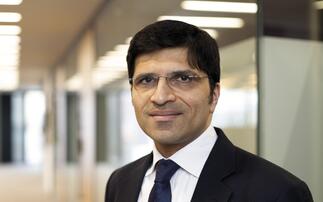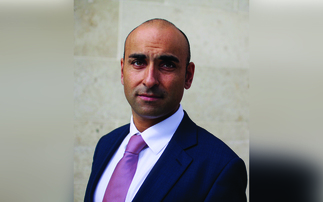
Coaching clients through the cycle
While history has shown that long-term investing typically leads to positive returns, the lived experience for investors can feel like an emotional rollercoaster due to the twists and turns of the investment cycle. Strong emotions - which range from despondency during market corrections to FOMO (fear of missing out) during rallies - can cause behavioural biases and often result in investing errors that can throw investors off course in the short term.
A key part of any long-term investment recommendation is making sure clients stay the course by focusing on the outcome not the journey. This makes behavioural coaching a critical aspect of the ongoing value that financial advisers can demonstrate to their clients - something that is more important than ever under the lens of Consumer Duty.
Behavioural biases - such as herding, anchoring and short-termism - can be costly. In our Investor Confidence Barometer survey (May 2023), advisers estimated their clients lose at least 2% pa of foregone gains due to emotional decisions. Selling after markets correct, buying expensive investments at the height of a bubble, or simply not taking enough risk are all examples of behavioural investing biases.
Tailoring client messaging
Not all investors are equally susceptible to the same behavioural biases. Different investor archetypes have different approaches to the market depending on their investment personality and behaviour.
By considering some common investor archetypes which group together investors based on their financial personalities and prominent biases, advisers can tailor the coaching and messaging they provide to clients.
In this article, we concentrate on four key common archetypes that advisers will most likely recognise among their client base and outline how advisers can target their messaging to each archetype.
Four common archetypes

Prominent behaviour: risk averse, reluctant to invest, takes losses very seriously.
Prominent biases: inertia, status quo, regret avoidance, anchoring, loss aversion, endowment effect.
The Preserver is a classic risk averse investor, who places high emphasis on security of capital. Preservers can also be older investors who may have become more risk averse as they have built up wealth and experienced through at least one crisis (e.g. 2008 financial crisis, 2020 Covid pandemic) that has significantly impacted their portfolio.
They are reluctant to invest initially (a bias known as inertia) or take actions once invested (status quo bias) since they worry about making the wrong decisions (regret avoidance). They typically show lower composure and higher anxiety during volatile times, take losses badly and over-focus on short-term market movements. This makes them prime candidates for advice.

Prominent behaviour: confident, prepared to take risks.
Prominent biases: overconfidence, illusion of control, attribution bias.
The Accumulator is interested in growing their wealth and is prepared to take risks. They are often successful in business, generally happy to work with advisers, but may occasionally want to influence the process. They can be strong willed and confident; in fact, they may be (or have been) overly confident with their investment approach due to their career success.
While their risk appetite is often high, they can also show high levels of discomfort when things are not going well. This can dent their investing confidence when they realise they cannot control the outcomes of investing.
Four common archetypes (continued)

Prominent behaviour: goes with the flow, mostly passive, susceptible to FOMO.
Prominent biases: herding, recency, hindsight, regret aversion, framing and cognitive dissonance.
The Follower is generally a passive investor who will go with the flow and take the most popular investment options. They may put off seeking advice initially, but they will mostly be compliant clients once advice is sought. They are unlikely to have an investing plan, their own formed opinions or have properly considered risk. They can be susceptible to acting differently depending on how things are framed.
They may become interested in the latest investing trend if that is popular among their friends. They tend to become more engaged when stock markets are in the news, making them vulnerable to buying at the top and selling at the bottom of the cycle.

Prominent behaviour: engaged, analytical, and often contrarian.
Prominent biases: availability bias, confirmation bias, representativeness, self-attribution bias, and overconfidence.
The Independent is an engaged and opinionated investor, who has their own ideas about investing. They are often analytical, prepared to do their own research, and they can be contrarian. While they are less likely to be advised than the other archetypes, they may seek advice at key life stages like retirement or when considering estate planning. They like to be involved in the investing process.
Due to their willingness to do some research, they may wish to act hastily, however, using only partial information to invest. This can leave them prone to confirmation bias, where having done some of their own research, they only see the information that confirms their views. They may also be unwilling to admit mistakes given the sunk costs involved in doing that research.
Archetypes and the investment cycle
Archetypes are useful for mapping clients to the most suitable products based on their full financial personality and not just their risk tolerance, which is a key consideration within the Consumer Duty legislation.
The investment cycle is a way to conceptualise the different phases of an investor's emotional state and how that can influence their investment decision making. Investor archetypes will behave differently through the investment cycle.
The Follower is the classic sentiment-driven investor. They will typically be well exposed to the market uptrend but they are also the most likely to become too engaged when market sentiment moves from the excitement to thrill stages. They may chase the hottest, most highly valued investments at the top when sentiment - and financial risk - peaks with euphoria. Followers are also inclined to become fearful when the cycle trends lower, experiencing panic and capitulation. This makes them likely to sell at the bottom despite the fact it is the point of maximum financial opportunity.
The Preserver is often underexposed to the uptrend in the cycle due to their risk averse nature. This means they may not experience the same amount of positive emotions as other archetypes. They are however the most pained by the downtrend in the cycle and experience the full extent of the negative emotions such as depression and panic. Rather than use the correction as an opportunity to buy, it is invariably seen as a justification for not taking on risk.
The Independent may miss the full extent of uptrend due to their contrarian nature. They are more likely to check out of the market and increase cash holdings at the excitement or thrill stages based on their analysis of valuations. However, markets can make significant gains in the latest stages - from thrill to euphoria - meaning that they risk missing out on net gains even after accounting for the correction that follows. Advisers may want to encourage a less active approach with Independents as their interventions do not always add value.
The Accumulator will typically be fully exposed to the rally given their high risk tolerance. They are also the archetype that really gets the benefit of adding at the bottom - although that is not to say they won't be pained by the down-trend itself, experiencing the same emotions as other investors. The difference is they tend to have a greater willingness to see the financial opportunity. This combination of high risk tolerance and greater confidence to invest makes them the archetype most likely to build wealth over the long term.












